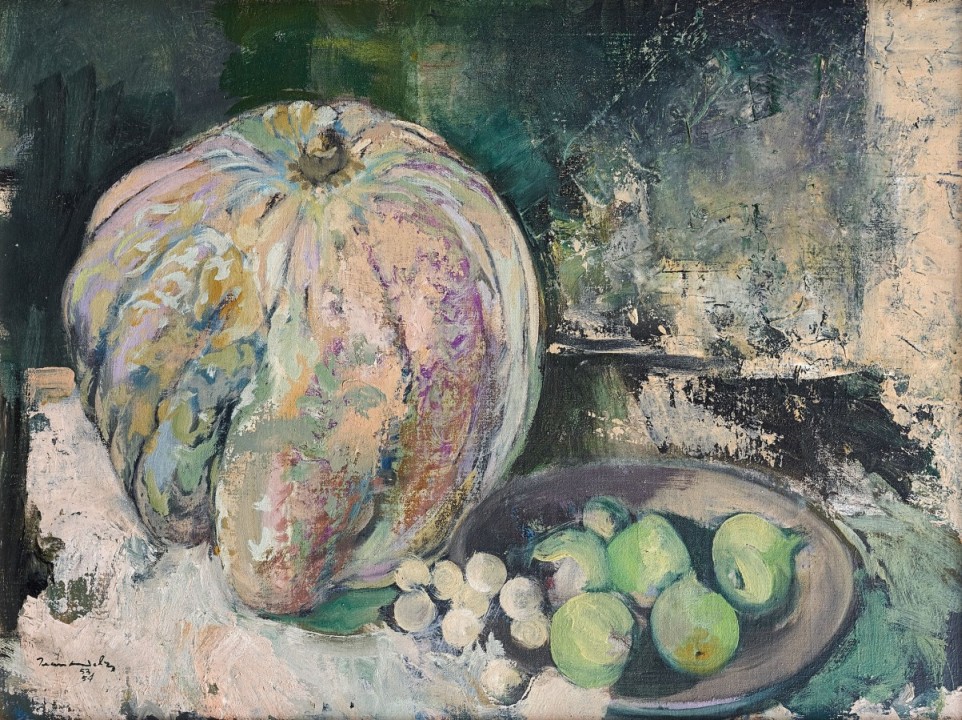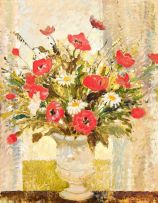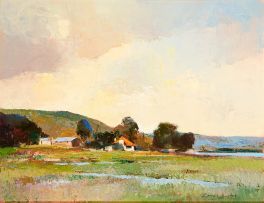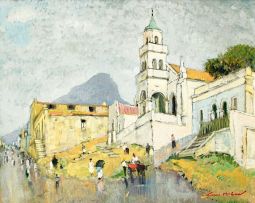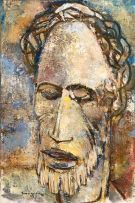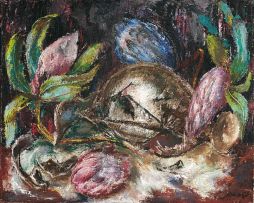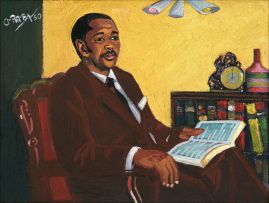Important South African & International Art, Jewellery and Decorative Arts
Live Auction, 12 October 2015
Important South African and International Art, Evening Sale
Incl. Buyer's Premium & VAT
About this Item
signed and dated 53 and 54
Notes
Austrian by birth, Jean Welz spent some 12 years in Paris before moving to South Africa in 1937. Welz was well acquainted with the work of Paul Cézanne, Pablo Picasso and the Impressionists. Welz 'saw himself as a symbolist. Because he started painting comparatively late in life, he realised quickly that art does not simply involve imitating nature. Every stroke and dab of a brush creates a mark - a symbol - and these marks in turn combine to suggest forms'.1
In the 1940s Welz gave two art students a few lessons. One of them remembers how, for their last lesson, he 'placed an apple on a chair in front of them and asked them to draw "the soul of all apples" and not the visible form of this particular apple. This was his way of attempting to expose them … to the exacting task of the artist in the search for the innermost nature of matter . . .' 2
Welz's unique use of oils is well-illustrated in this painting. Not only are the layers of colour scumbled across and next to each other, they are scraped, thinned, rubbed and reapplied to echo his earlier use of pastels.
Welz created many still lifes featuring pumpkins, though the 'vocabulary' and implied symbolism varied over time. Here he 'depicted the density and physical reality of his subject,' an aspect one could interpret as symbolic of the Good Earth and its wholesome, nutritional bounty. In this painting his palette of greens, blue, rose, purples and buff also reminds one of the colours used in many of his nude paintings - new life or new beginnings might be implied and the fresh green of the figs seem to complement this idea.
Like many of his works this one is double dated. Welz often reworked his paintings because 'For him truth and reality could not be seen in only one dimension, and through each refinement of the image he attempted to interpret and expose another of its facets.' 3
- Elza Miles (1997) The World of Jean Welz, Cape Town: Fernwood Press. Page 9.
- Ibid. Page 11.
- Ibid. Page 8.
